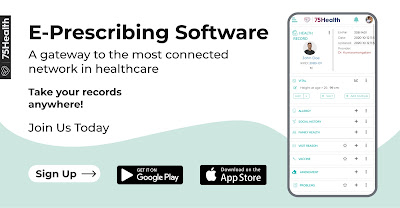Re-evaluating Patient Data Privacy in the Era of Digital Health
Medical care has bit by bit moved toward advanced record keeping in the expert domain—originates before most current on the web and portable administrations, and expressly avoids wellbeing data made or oversaw by patients themselves.
Individual wellbeing data is not, at this point private. Web-based media stages, wearable wellness trackers, and applications to oversee pregnancy and emotional well-being all gather health information that can be shared for publicizing purposes and attached to clinical records and other customer data.
An individual wellbeing record unequivocally claimed all authority to utilize quiet information for "promoting and publicizing purposes. My Health Record plays a vital role in the current scenario.
With fast development in the reach and volume of patient information, which is accessible in computerized structure, the constraints of the HIPAA system—presently right around 25 year old—merit authoritative consideration. Without clear guardrails, public trust may disintegrate despite rehashed embarrassments thus sabotage the potential for advanced wellbeing to encourage a time of more available, composed, and customized care.
HIPAA Privacy, Security and Breach Notification rules, has demonstrated adequately adaptable to oblige huge changes in the degree and mechanism of data assortment and move, as these covered substances have expanded their utilization of clinical information. My Health Record secures data of the patients and acts as a bridge between Physicians and Patients.
Five regions to adjust the HIPAA structure to ensure protection as patients and clinicians grasp new information driven instruments to deal with their wellbeing and convey care:
1.
Define separately recognizable wellbeing data as a
characteristically ensured class of information, instead of a class that is
secured just when made or held by specific substances.
2.
Create new meanings of exclusively recognizable wellbeing
data "overseers" and "processors,"
3.
Establish people's entitlement to get to, revise, and erase
independently recognizable wellbeing data that is held by an overseer or
processor, and to think about and control the utilization or exposure of their
own information, remembering any investment for de-distinguished informational
indexes utilized for research purposes.
4.
Codify the allowed employments of such independently
recognizable wellbeing data, missing unequivocal, on-going, and granular
patient assent.
5. Specify clear boundaries for purchaser benevolent and revocable assent, for any utilization or exposure of information past the barely allowed classifications
Author Bio:
Niranjana is a budding content writer. She is not famous, but inculcating herself by writing. She is a South Indian who enjoys reading books and writing content. She has written contents on healthcare industry. If she doesn’t do all those, she wants to sing and try new things. She enjoys being alone. Read her blogs and give it a try.



Comments
Post a Comment